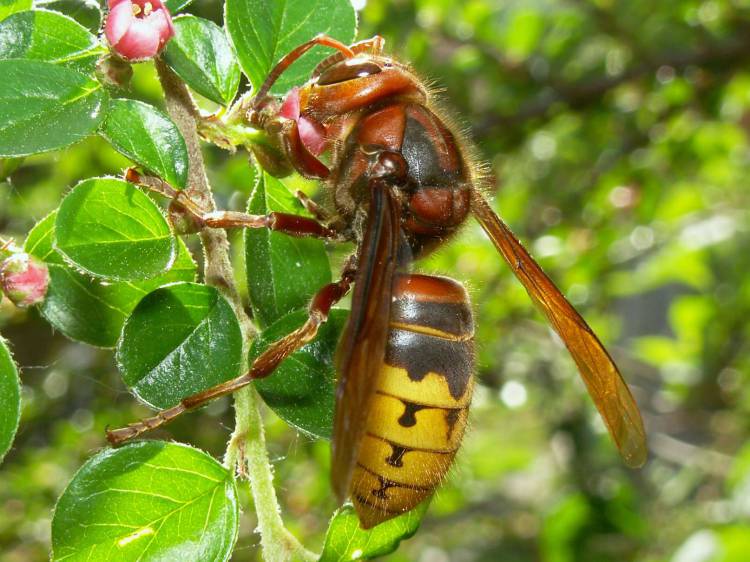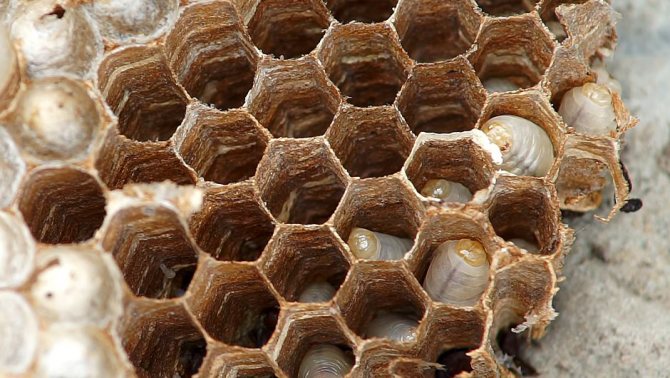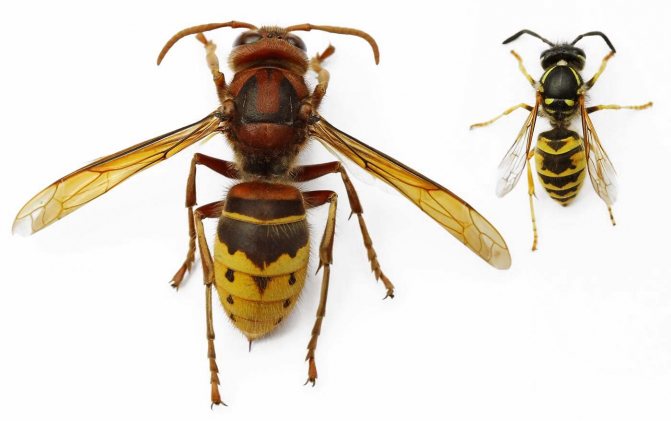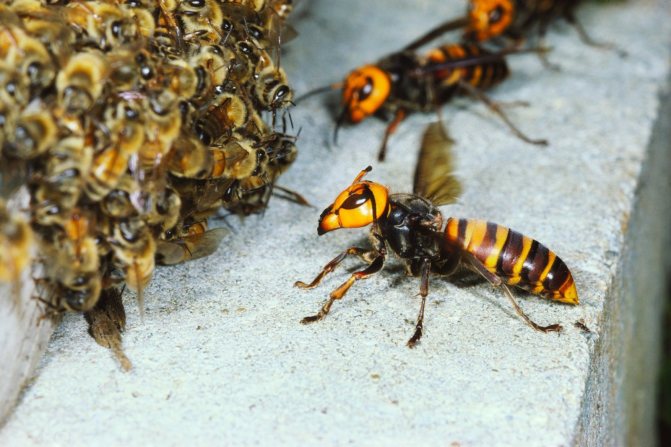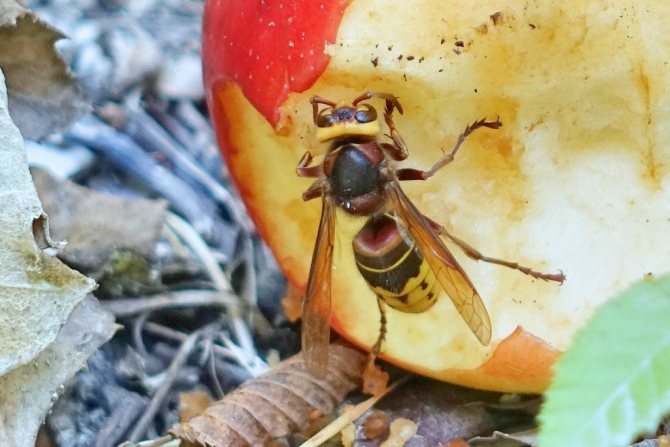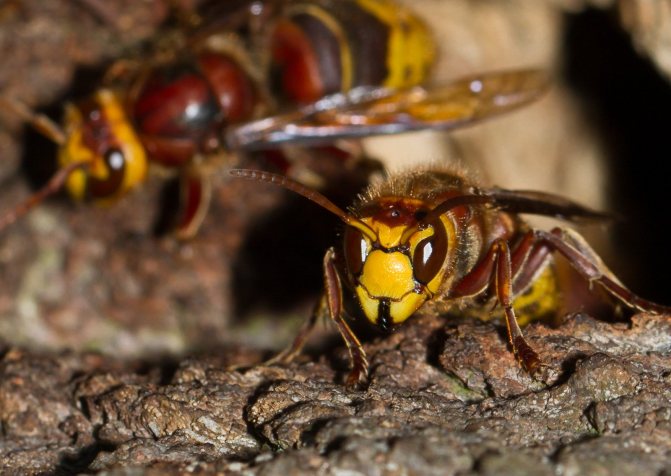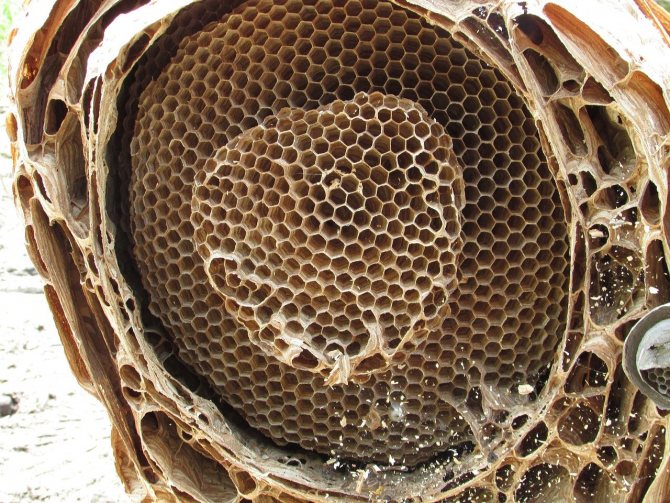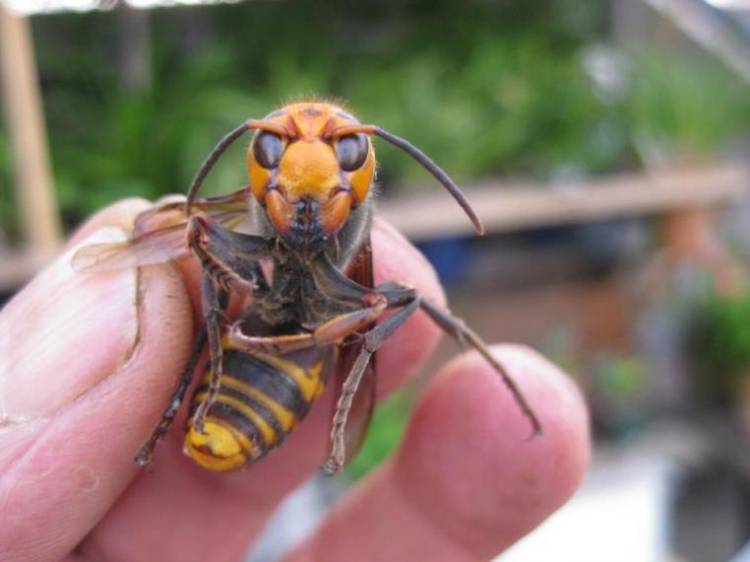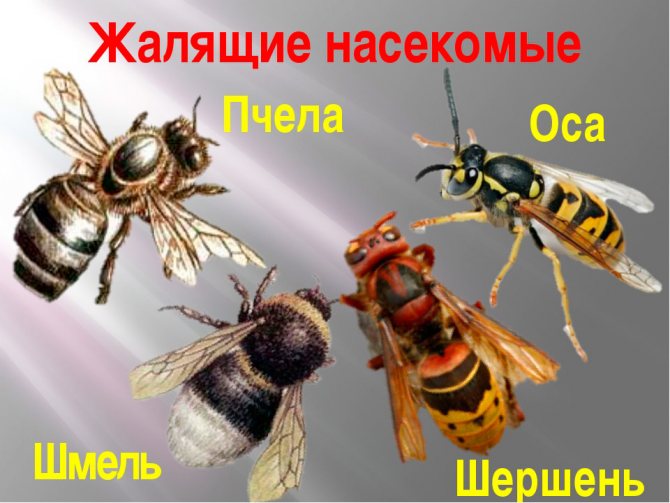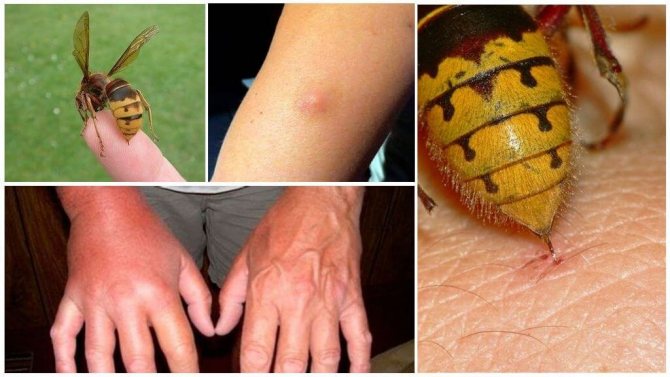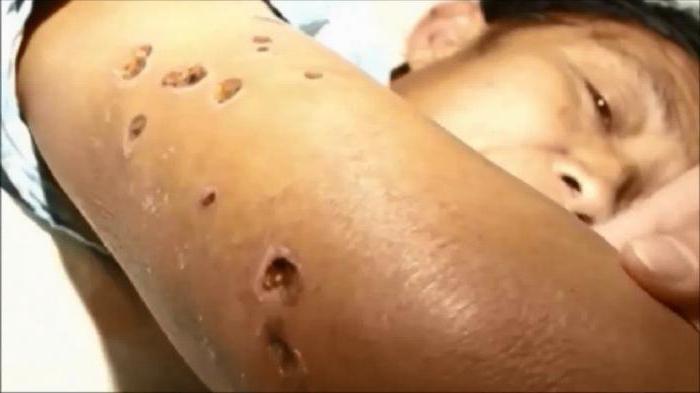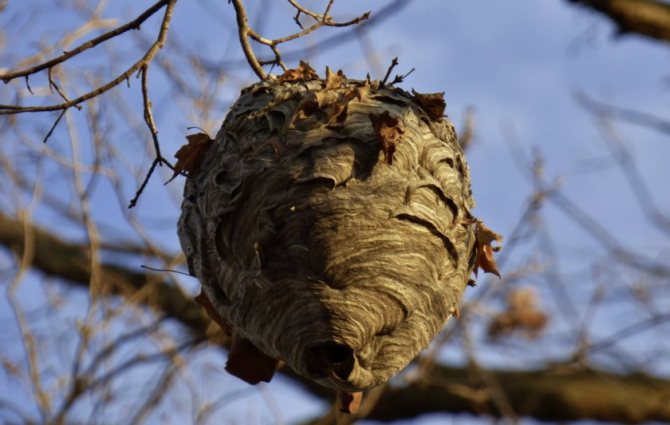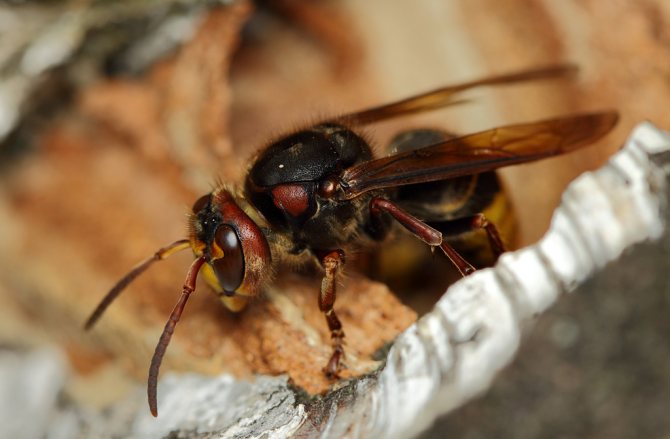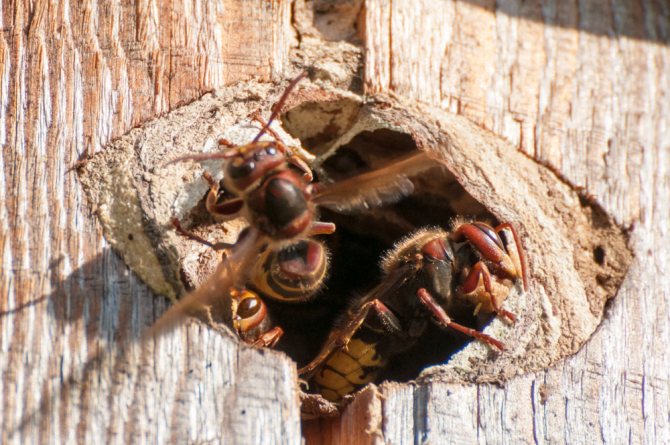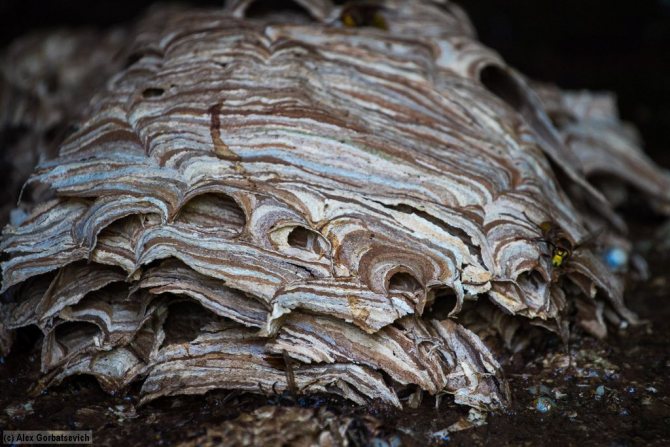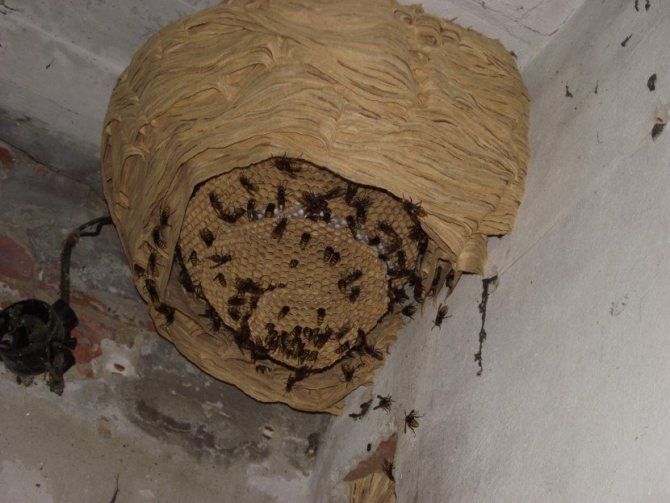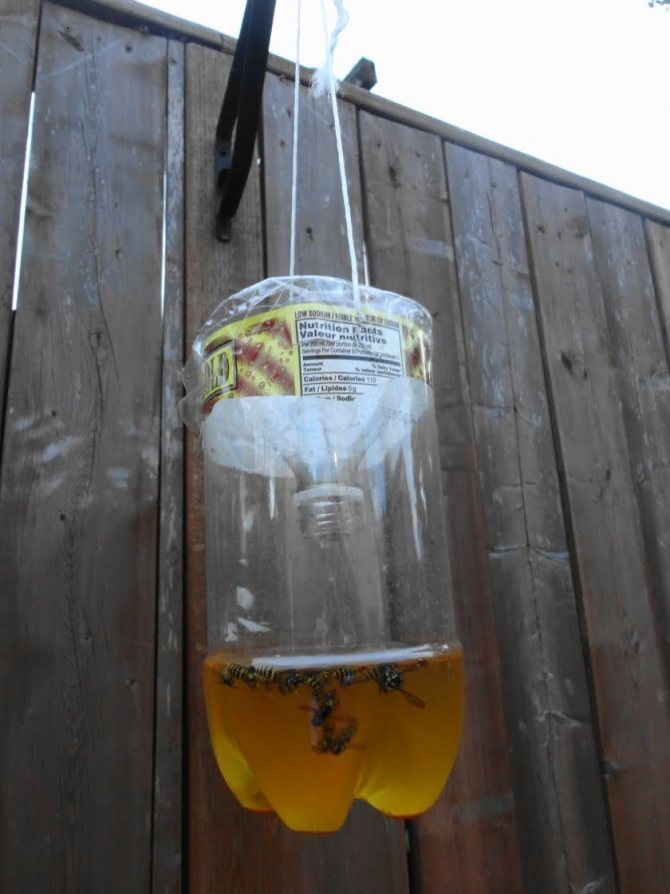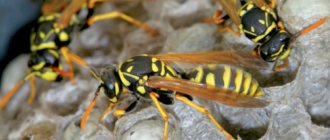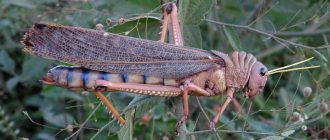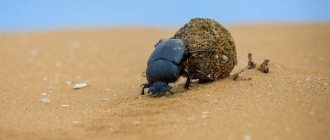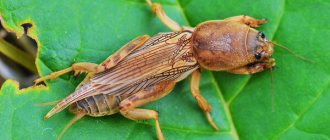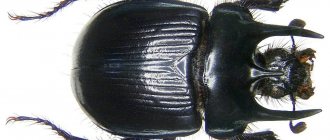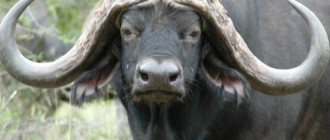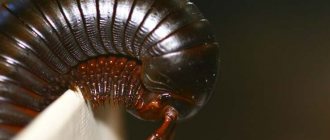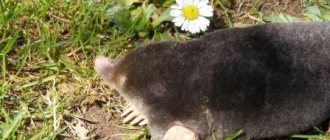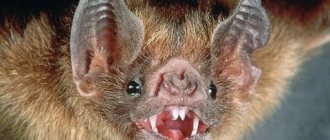- Wild animals
- >>
- Insects
We are surrounded by many interesting insects, among which a special place is occupied by hornet... These creatures have a very bright appearance, rather large dimensions, and are excellent hunters for small pests. Hornets are not held in high esteem among humans.
This is not surprising, because they can sting painfully, and their poison in large quantities can even lead to death. However, animals carry a great danger only in exceptional cases, a lethal dose can be obtained only with multiple bites. For the rest, the hornet is a very interesting, useful insect. It's worth learning more about it!
Origin of the species and description
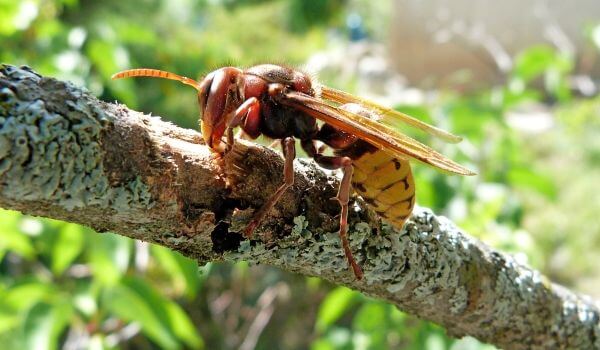
Photo: Hornet
A large wasp whose flight is accompanied by a loud buzz is a hornet. He is a prominent representative of the family of social wasps, often called the hornet wasp. In Latin, the name of the species sounds like "Vespa". It is translated into Russian by the word "wasp". Initially, all social wasps were attributed to the Vespa genus. However, in the nineteenth century, it was divided into two genera. Hornets are still Vespa and wasps are Vespula (small wasp).
Video: Hornet
The origin of the Russian name "hornet" is no less interesting. The root of this word, in turn, means head, horns. For this reason, scientists have concluded that the hornet wasp got its name because of the anatomical features of the structure of the head. The animal has an enlarged crown, movable antennae.
To date, about twenty species of hornet wasps have been recorded. Vespa mandarinia is recognized as the largest species. Adult Vespa mandarinia can be up to five and a half centimeters long.
Among the various types of hornets, the most interesting of them can be distinguished separately:
- black hornet. It is a little-known, rare species of social wasps. It is listed in the Red Book due to the rapid decline in population size. Has a characteristic predator color - yellow stripes on the black back;
- Asiatic. Quite a large species, has a large wingspan. Lives in Asian territory. It carries a certain danger to humans. His bite is highly toxic;
- Philippine. Differs in solid black color, produces a dangerous poison. Lives exclusively in the Philippine Islands;
- Oriental. Of all the representatives of the genus, it has the brightest colors. Its belly is decorated with a wide yellow stripe, the body and wings are painted in bright red. The species tolerates heat remarkably, lives in the steppes and even in deserts.
Appearance and features
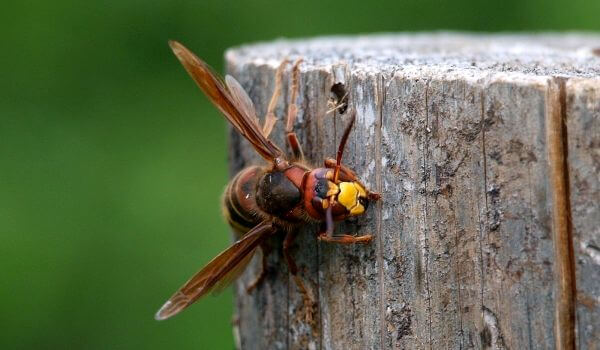

Photo: Hornet insect
The average size of these insects is 1.8 to 3.5 centimeters. Only some species can reach a length of five and a half centimeters. Hornets are different from other members of their family. They have larger dimensions, increased head sizes, and a wide crown. These insects have compound and simple eyes. Head color depends on the type of hornet. It can be orange, red with brown tint, black, yellow.
Adults are distinguished by rather large, strong mandibles. They are colored yellow, brown or black. The head of the insect has brown-black antennae. Their number depends on gender.The abdomen of such a wasp is rounded, with a clearly defined waist. There is a sting at the end of the belly. The sting, if the hornet is calm, is almost imperceptible. It is drawn into the body. There is a special reservoir at the beginning of the sting. It contains poison.
Hornet wasps have the ability to sting repeatedly. Their sting is smooth, straight. It does not have jags, unlike the bee. For this reason, when stinging, the animal does not harm itself.
The body color of this species of wasp is similar to others - in most hornets it is black and yellow. The only difference is that the stripes do not alternate as clearly. However, there are varieties whose color is completely different from their relatives. For example, the alternating hornet has a body with black and brown stripes.
Some hornet wasps have a fairly wide yellow or white stripe on their belly. The whole body is covered with small hairs. They grow chaotically and vary in size. Hornets already have three pairs of legs. They are either brown or yellow.
Where does the hornet live?
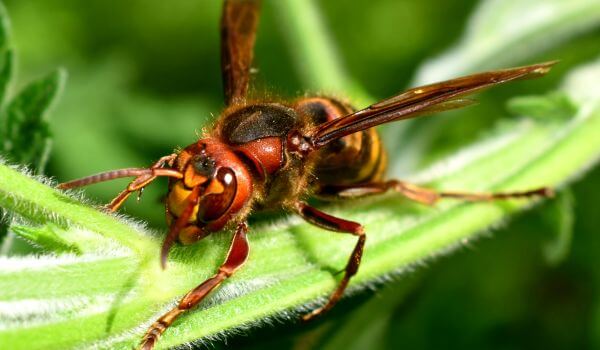

Photo: Asian hornet
Representatives of this genus are widespread in the Northern Hemisphere. Their habitat depends entirely on the characteristics of the species. So, the most popular is the common hornet. This is the only species that lives in large numbers in Ukraine, Russia, North America. In Russia, such a wasp is represented more in the European part of the territory. In the far north, you will not find it. Also, the common hornet lives in Japan, Korea, China. Small populations of the animal can be found in Mongolia, Kazakhstan.
North America is not the natural habitat of the common hornet. The insect was brought there quite by accident back in the nineteenth century.
In most of Asia, in the Jewish Autonomous Region, in the Primorsky and Khabarovsk Territories, the Asian hornet lives. It is large in size, in Japan this insect is called "bee sparrow". Also in tropical Asia, as in France and Spain, Asian predatory wasps are common. They build their "houses" on tree branches, feed and hunt bees.
The eastern hornet wasp chooses semi-dry subtropical regions for living. It can be found in Uzbekistan, Afghanistan, Turkey, Italy, Romania, Greece, North Africa, and other European and Asian regions. On the vast territory of the Russian Federation, scientists have noticed eight species of hornets. An ordinary, eastern hornet lives in the European part of the country. The other six insect species live in the south of the Far East.
Asian killer bite relief measures
The reaction of the human body to the poison of the Asian hornet, the photo and description of which is in this article, can be very different, depending on age, health status, and the number of bites. Therefore, when an insect bites, it is necessary not to waste time and immediately consult a doctor.
Almost always, severe swelling occurs at the site of the bite, so the doctor usually prescribes antihistamines. Depending on the severity of intoxication and the symptoms manifested, adequate therapy is prescribed with the use of drugs that neutralize the toxin and eliminate the consequences of its action.
In most cases, hospitalization and round-the-clock medical supervision of the victim's condition are required.
What does a hornet eat?
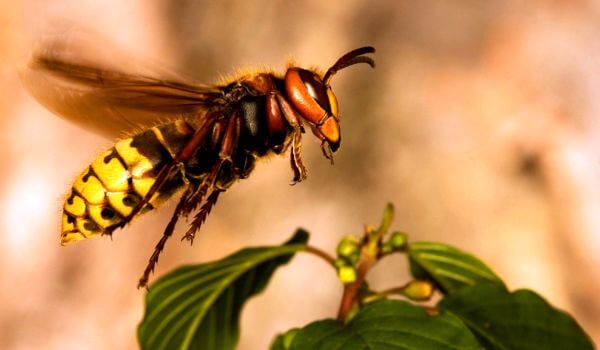

Photo: Hornet in flight
The hornet is an amazing creature. It is able to feed on both plant and animal matter. In most species of such wasps, the diet consists of products familiar to the family: nectar, plant foods with a high sugar content. They are often seen on rotting fruits, near honey, on trees, from the bark of which sap flows. Hornets constantly fly into orchards. There they feast on sweet, overripe fruits.It is at this moment that the animal can sting a person who reached for the fruit.
Despite the fact that sweet nectar, fruits, plant food can fully satisfy the needs of the hornets' organism, these insects can instantly turn into excellent hunters. They kill other small insects with powerful jaws and stings. Locusts, other types of wasps, bees, grasshoppers, butterflies, and spiders become their victims. Predatory species of hornets in their life are capable of destroying about five hundred colonies of bees, wasps.
The most surprising fact is that the hornets themselves rarely use killed insects for their own food. The animal thoroughly chews its prey until the suspension is uniform. Adults bring this suspension to the nests and give it to voracious larvae. If we consider that small pests go to the larvae for food, the hornet can be called a useful insect.
Features of character and lifestyle


Photo: Hornet Red Book
Hornet wasps lead a social lifestyle. They huddle in flocks, build nests. The number of one flock can reach hundreds of individuals. Hornets' nests are distinguished by special grace and grace. These insects are among the best builders. The founder of the nest is always the female who survived the winter. With the onset of warmth, the female begins to search for a suitable place. Usually this place is an abandoned hollow in a tree, an attic of a residential building, a crack in a rock.
The female begins building a nest from rotting wood, old bark. In this nest, she establishes her colony. The first offspring of the female becomes working wasps. They take over all the responsibilities for construction, house protection, and nutrition of the offspring. Working hornets spend all day in search of food: nectar, plants, small insects. The hornets' lifestyle is predominantly daytime.
These insects have a fairly high level of development. All members of the genus are able to distinguish between the status of each other. They do this by smell and other characteristics of adults.
The nature of the hornets is not warlike, they are not annoying. They will not get into a jar of jam, they will not bother with their presence around a feast with sweets and fruits. Hornets prefer to avoid human society, although they often build their nests in the attics of residential buildings. Despite this, hornet attacks on humans are not so rare. And not always such a bite can pass unnoticed. Severe allergic reactions occur. This is due to the high proportion of histamine in the venom of these insects.
The eternal question: "What to do?"
Many summer residents simply mistake the hornet for a large wasp. They boldly try to destroy the nest. And resourceful conquerors of real estate to warn about the danger of relatives, use odorous alarming substances pheromones. And if insects begin to disturb during daylight hours, then other brethren will fly to their aid. Enraged, large and dangerous hornets can cause trouble.
Only females sting. It is visually difficult to determine the sex of an insect. True, the female is much larger than the male, but when and why should we compare them? By the way, each female stings more than once. After being stung, a person may experience an allergic or toxic reaction. If a lot of poison gets into the head or neck area, and even into a blood vessel, then it is not far from lethal outcome due to a sharp drop in pressure.
Even beekeepers, and they work with bees all their lives, have health complications from the action of hornet venom.
It is necessary to immediately apply whatever cold to the affected area. If the swelling increases, an ambulance must be called urgently.
Social structure and reproduction
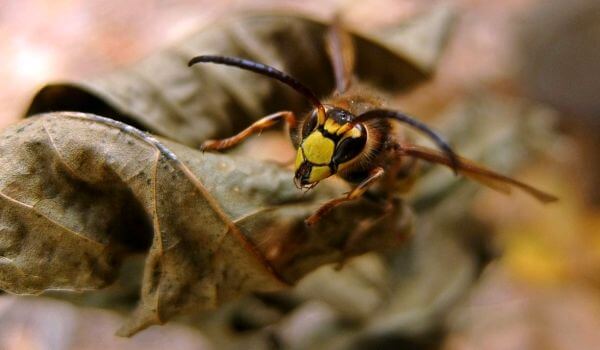

Photo: Hornet
Hornet wasps are quite prolific insects. However, not all females are fertile. The uterus is capable of reproducing offspring.They are usually large in size. It is the females that become the founders of the hornet family, they begin the construction of a house (nest). Before laying eggs, the uterus, with the onset of the first heat, is looking for a safe, convenient place to build a house. She lays her eggs after building the first few hundred.
Further, her duties include finding food and caring for future offspring. It takes a certain time for the eggs to ripen. First, larvae appear from them, then adults. When new members of the community become like adult hornets, they take over all the responsibilities of their parent. The queen continues to lay eggs, and the working wasps get food, guard the house, finish building it, look after the larvae.
After four weeks, new hornets appear from the larvae. They usually kill the uterus due to its inability to reproduce more offspring. Some individuals simply drive it out of the nest. Representatives of the genus living in the European part do not live long. Their total life span is only a few months. Only the uterus has a long life span. They are able to spend the winter in suspended animation.
Hornets can give a good rebuff to their enemy with the whole flock. For their own protection, they know how to quickly mobilize forces. In case of danger, this animal releases an alarm pheromone. If such a signal is noticed by his relatives, then the attacker is in real danger.
Insect life cycle
Asian hornets are similar to other Vespa species. They live in paper nests, make them themselves on the basis of young tree bark, it is glued together with salivary secretion. The female creates a new family by laying eggs with the arrival of heat, after which the nest increases in size. Initially, she herself finds food for the larvae, looks after and care for them. A month later, young growth appears, the task of which is to feed new larvae and protect the family. The uterus will lay eggs for the rest of its life.
Natural enemies of hornets
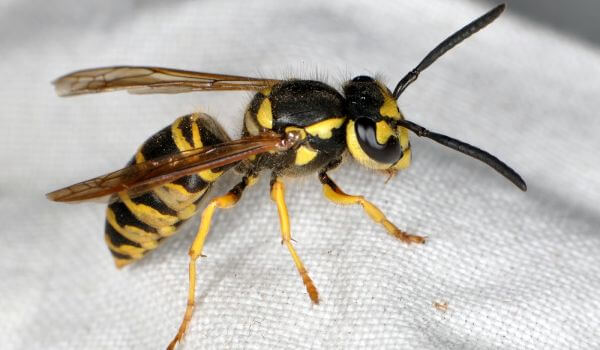

Photo: Hornet insect
Hornets don't have many natural enemies. This is due to the fact that these insects are relatively peaceful. They prefer to run away from the enemy. Only by defending itself can a hornet prove itself as a real hunter. Such animals are especially ferocious if someone coveted their nest, offspring, uterus. Also, a small number of natural enemies is explained by the venomousness of hornet wasps, as evidenced by their bright color. Other animals try to bypass such insects.
A number of natural enemies of hornets can be written:
- small parasites. Nematodes, riders, ticks slowly but surely kill large hornets, greatly undermine their health;
- some types of birds. Only a few species of birds are able to hunt representatives of social wasps. Most birds simply swallow them whole, preventing the insect from stinging itself;
- fungi. The fungus can germinate in a hornet in the head, lead it to a painful and long death;
- other insects. Hornets can be killed by larger wasps, ants. Ants most often feast on insect larvae;
- of people. Despite the benefits, hornets are considered pests. They settle in residential buildings, are quite dangerous to human health and life, and cause significant damage to young trees. For this reason, hornet nests are often destroyed by humans.
Relationship with a person
Of course, the hornet belongs to dangerous insects that pose a threat to human life and health. Bee stings and wasps are different in nature. They have different chemical compositions and are treated differently.
The bite of such a large wasp as a hornet can pose a serious threat to humans. The fact is that the larger the wasp, the more poison it can inject into the sting site at a time.Moreover, wasps do not tend to lose their sting in the wound, as it happens in bees.
They can inflict several painful injections, and, even in a person who does not have an increased allergic reaction, serious health and well-being problems can develop after several insect bites of this size.
This is especially true of such a species as the Asian giant hornet, which is classified by entomologists as one of the most dangerous arthropods on the planet.
Such a huge insect can inject enough venom to cause anaphylactic shock. And here you have to call an ambulance.
It must be remembered that the significance of these stinging ones for the gardening business is very great. Whenever possible, people destroy the colonies of these dangerous creatures sleeping in winter, poison them in the yard, but this is an extreme forced measure. You just need to follow the rules of coexistence, because these large wasps by themselves avoid contact with humans.
You should not touch the hornet's nest under any circumstances, even if you find it in your attic at home. It is better to call specialists who will do everything right. If a large wasp is circling near you, you do not need to wave your arms and make sudden movements, this will only anger the insect and cause aggression.
OUR READERS RECOMMEND!
To get rid of insects, our readers advise scarer Pest-Reject
... The operation of the device is based on the technology of electro-magnetic impulses and ultrasonic waves! Absolutely safe, ecological product for humans and pets. Read more here ...
Population and status of the species
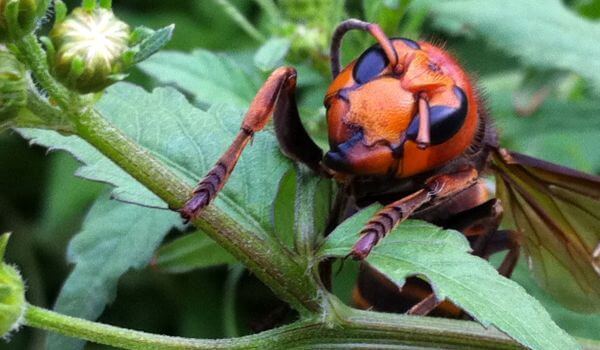

Photo: Hornet animal
The hornet genus is wide enough. It includes more than twenty different species of insects, differing in color, size, diet and lifestyle. Due to the presence of several species, high fertility, this genus is not endangered, not listed in the Red Book.
The general population of hornets is not a concern for scientists. It is normal, of the least concern, and has a low risk of extinction. However, if we consider the population of hornet wasps in the context of individual species, the situation is not so encouraging. Many species are on the verge of extinction and are listed in the Red Data Books of individual states and cities. There are completely different reasons for the reduction in the number of such animals, which can be found in the next section of the publication.
The endangered species include the common hornet. Its population in different regions of its natural habitat is very unstable. In particular, this variety is included in the Red Book of the Smolensk Region. Also a small representative of the hornet genus is the Dybowski hornet (black). It has an average size for hornets, has a black-brown color, and is a predator. The black hornet is included in the Red Book of the Chita Region. Some species of hornets are included in the Red Data Books of Germany and many other European countries.
Habitat
The main habitat of the giant is the territory of Japan (all islands), as well as:
- India;
- Korea;
- Nepal;
- Sri Lanka;
- Taiwan.
Very rarely, the insect appears in the Primorsky Territory of the Russian Federation. Japanese species can be seen exclusively in Japan, the hornet is extremely rare on Sakhalin. The main habitat is the subtropical climate of Asia, the USA and southern Europe.
Attention! Asian subspecies of insects form nests from several layers, and the bark is used as a base. Visually, their housing looks like gray paper.


